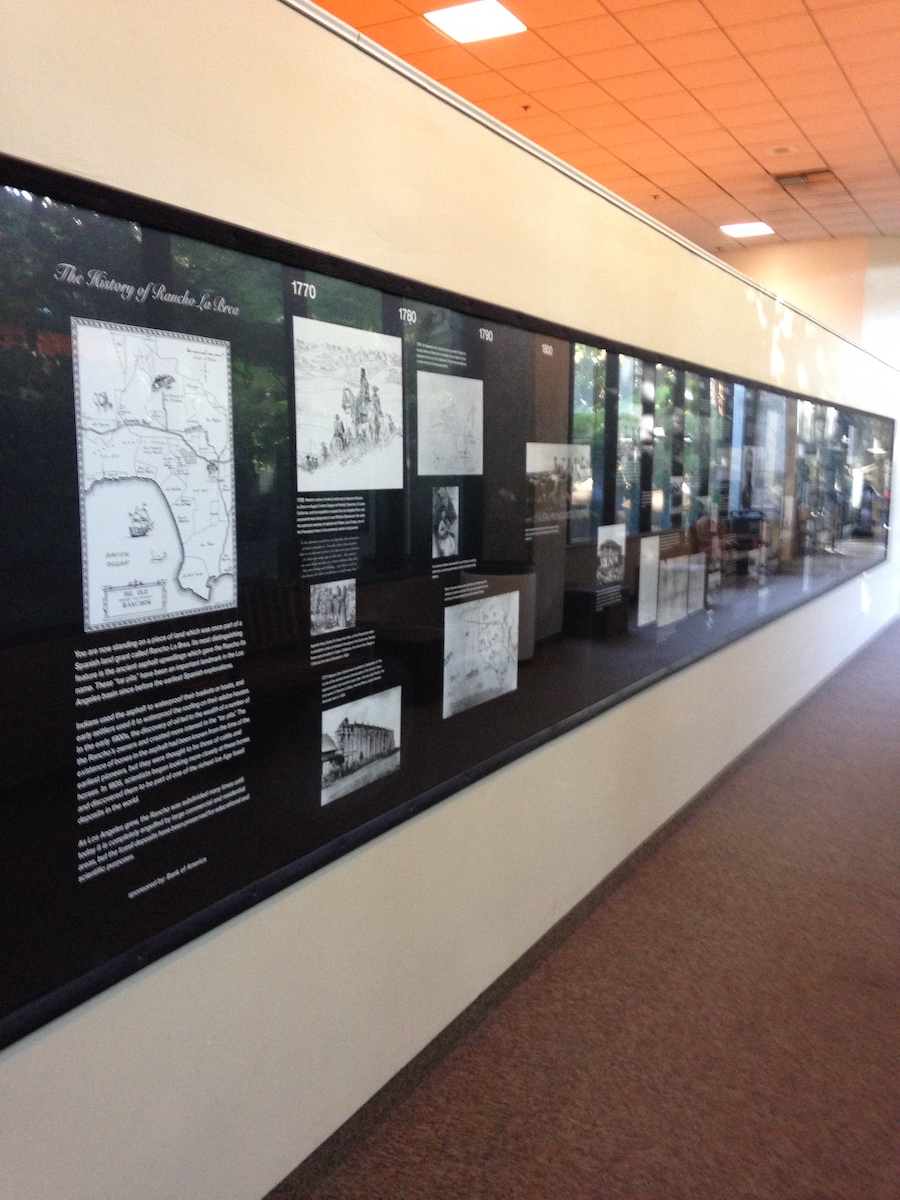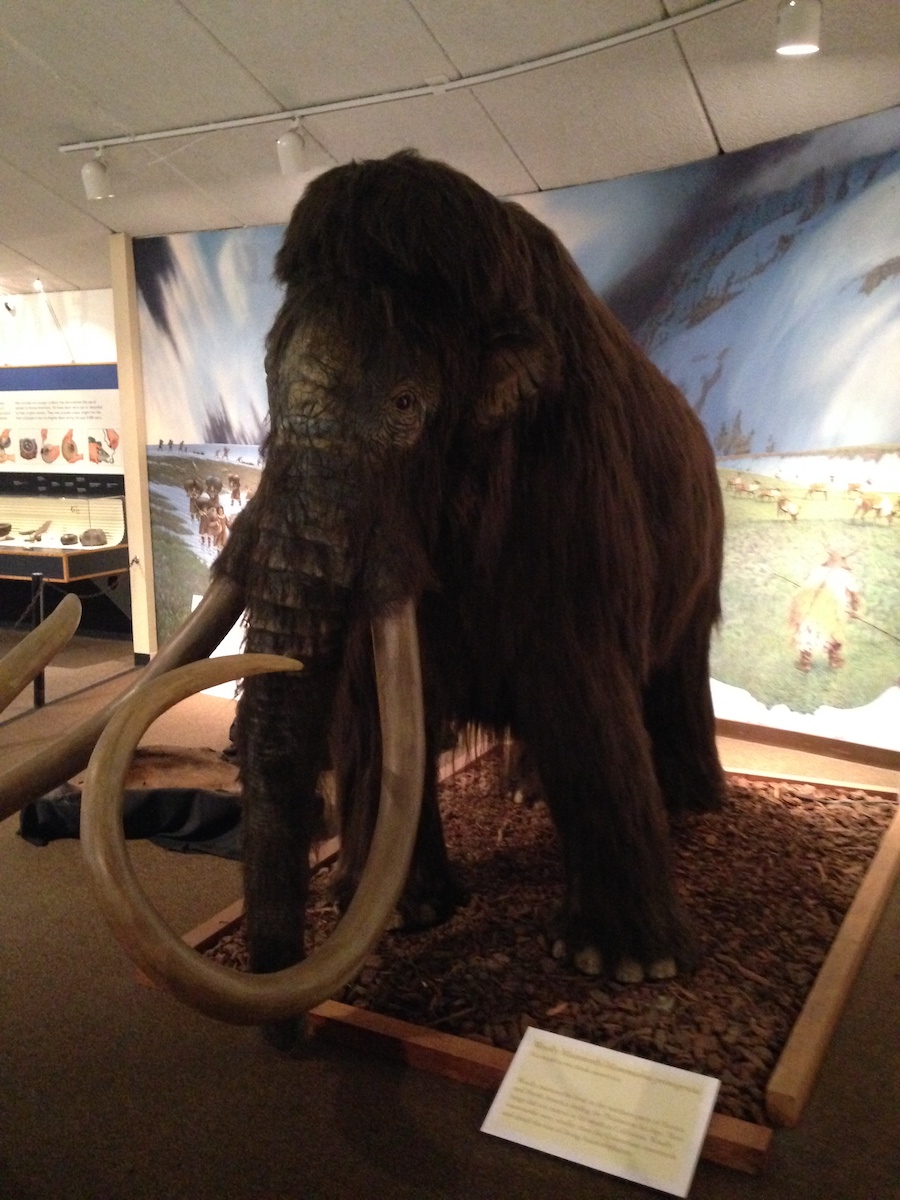R
ight in the heart of L.A. sits the world's most powerful gateway to the Ice Age.
- The asphalt seeps at La Brea Tar Pits are the only active urban fossil dig site in the world.
- Plants and animals from the last 50,000 years are discovered there every day.
- On display are extraordinary saber-toothed cats, mammoths, dire wolves, and mastodons, as well as the tiny, but scientifically significant, microfossils of insects, plants, mammals, and reptiles.
- The Tar Pits help understand life around Wilshire Boulevard long before we got here.
- Since 1906, more than one million bones have been recovered representing over 231 species of vertebrates.
- In addition, 159 species of plants and 234 species of invertebrates have been identified.
- It is estimated that the collections at the La Brea Tar Pits Museum contain about three million items.
- More than 4,000 dire wolves have been found so far, making it the most common animal found in the tar pits.
- Saber-toothed cats are second at 2,000 and coyotes are third.
The tar pits aren't really tar at all:
Weird, right? It turns out we should be calling them ASPHALT pits, because that's what the black goo is. Wondering where this asphalt is even coming from? Here's the short version: This part of California used to be under water. Decaying sea creatures created fossil fuel deposits over a period of millions of years, and when ocean levels receded and this land was exposed, the fossil fuels began to be covered by layers of gravel, sand and clay– the products of erosion from nearby hills. The fossil fuels have been seeping through fissures in the sediment for the last 40,000 years and in low-lying areas, those deposits pool, creating– you guessed it– tar pits. I mean asphalt pits.The tar pits are only a few inches deep!
Did you always imagine prehistoric animals sinking into the tar pit goo like it was a sticky quicksand, until they finally sank out of sight? Oh, you poor thing. No. That's not how it happened at all. Experts believe animals accidentally wandered into the tar pits when they got covered by leaves and dirt and didn't look so much like a BUBBLING POOL OF CERTAIN DEATH. Scientists believe animals only occasionally got stuck to the point that they weren't able to free themselves– If a large animal got caught in one of the La Brea tar pits only once every ten years, it would be enough to account for the one million + bones that have been discovered there.For every one herbivore found in the La Brea Tar Pits, excavators have found nine carnivores:
This is because of something called entrapment, a term you'll hear a lot at the museum. Imagine a woolly mammoth gets caught in a tar pit– He's going to attract predators, from sabertoothed cats to dire wolves and birds of prey, some of whom get caught in the asphalt themselves.
More Ice Age and bird fossils have been found at the La Brea Tar Pits than any other site in the world.LIONS used to roam parts of the United States!
American Lions have been found in the tar pits- Since far fewer of them have been found than other carnivores, scientists believe they may have been smarter than their fellow predators. They are the largest cat found in the tar pits– their tails alone were about four feet long– and paleontologists believe they are so closely related to the African Lion that they've placed them in the same species.Ice Age Mammoths and Mastodons have been found in the La Brea Tar Pits:
Mammoths were larger and grazed on the plains, while Mastodons were smaller and preferred wooded areasAn incredible variety of extinct animals has been recovered from the La Brea Tar Pits:
There were giant ground sloths, Western Horses, Ancient Bison, Dwarf Pronghorns, prehistoric camels, three-toed tapirs and llamas.Many of the Ice Era age animals found in the La Brea Tar Pits are still around today:
They include dogs, gray foxes, pumas, bobcats, jaguars, rabbits, weasels, raccoons, mice and skunks, as well as grasshoppers, pillbugs, termites, gopher snakes, garter snakes, the western rattlesnake, the western pond turtle, rainbow trout, frogs, freshwater mollusks and many different kinds of birdsThe bird fossils found at the Tar Pits are kind of a big deal:
It turns out bird fossils are rare because their bones are hollow and don't tend to withstand the test of time. Birds that fell victim to the tar pits, however, were preserved by the asphalt. More than 100,000 bird fossils have been found at La Brea, including song birds, water birds, and birds of prey. The largest bird found was Merriam's Teratorn, which stood more than two and half feet tall and had a wingspan of about 12 feet!Only one human has been found in the La Brea Tar Pits:
The bones belonged to a young woman, believed to be between the ages of 18 and 25. She lived about 9,000 years ago, she was about 4′ 8″ and other than that, not much is known about her.
What scientists do know is that humans have been taking advantage of the tar pits for the last 10,000 or so years. Native Americans used the asphalt to waterproof their canoes and baskets. During the Spanish occupation of California in the 1700s, the land was used as a cattle ranch. In the mid-1800s, an American family bought the land, mined the asphalt, and began doing limited excavations of the tar pits for bones. The first large-scale excavation took place in 1913 and scientists have continued excavating the pits ever since.
https://suburbanturmoil.com/about-the-la-brea-tar-pits/2016/06/28/
Early 1900's:
The first scientific article mentioning the fossils of Rancho La Brea was by William Denton, published by the Boston Society of Natural History in 1875. However, it was not until the early 1900s, after W.W. Orcutt, a well known Los Angeles geologist, had amassed a collection of saber-toothed cat, dire wolf, and ground sloth fossils that the site's importance was widely recognized. Explorations by the University of California, the Southern California Academy of Sciences, and Los Angeles High School retrieved large collections of fossils from the site in the first decade of the 1900's. In 1913, the Los Angeles County Museum of History, Science, and Art was built in Exposition Park in part to house the fossils collected by the Southern California Academy of Sciences. Later that year the Hancock family gave sole permission to the newly-renamed Los Angeles County Museum (now the Natural History Museum of Los Angeles County—we know, the name changes are exhausting) to excavate for two years at Rancho La Brea. The result was an immense collection that provided valuable insight to our understanding of the late Pleistocene fauna and flora of North America.
During the Miocene Period:
(between 23 - 5 million years ago) the tectonic plates in the Southern California region changed from subduction to transform (strike-slip) faults. The crustal plates rotated which in turn stretched the L.A. region and formed a deep structural basin. Large amounts of marine sediments were deposited forming up to 6 miles deep! The L.A. Basin is one of the richest oil basins in the world in proportion to its size and volume. Later the Santa Monica Mountains uplifted and rivers flowing down brought large amounts of sands and gravels that subsequently buried the remains of plants and animals trapped on the surface of the asphalt seeps at Rancho La Brea.
https://tarpits.org/research-collections/about-rancho-la-brea
Dire Wolf Skulls:

Dire Wolf (Canis Dirus):
Rancho La Bren is widely known for its incredibly rich fossil deposits. These 404 Dire Wolf skulls represent only a portion of the more than 1600 wolves whose remains have been found here. It is thought that packs of Dire Wolves attempted to feed on animals trapped in the asphalt and became mired themselves. You can see that they are not all exacity alike in either size or shape. Research on these minor differences is sure to yleld information about wolf evolution and population structure.
Migration of people to the new world:

Migration of People to The New World:
During the last Ice Age, the growth of continental glaciers locked up millions of cubic miles of precipitation that would normally have gone into the oceans. The absence of this water lowered the sea level more than three hundred feet creating a bridge of land connecting Asla and North America where the Bering Strait is today.It seems certain that Mongolian immigrants crossed the Bering "land bridge" but, as yet, there is no conclusive evidence about when they came or what they hunted. This mural presents one of the current theories which suggests that they followed herds of animals to the new world. These first Americans were apparently confined to Alaska until about 30,000 years ago when the continental glaciers temporarily receded to open the way for colonization of the rest of the Western Hemisphere. With the passage of time, they separated into different tribes and developed different languages.




























